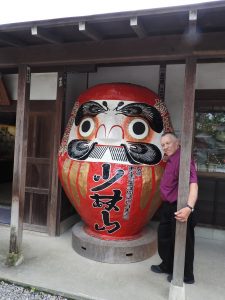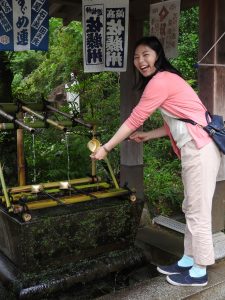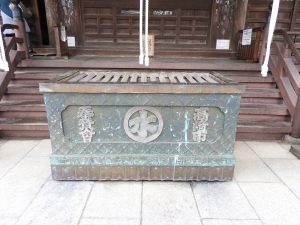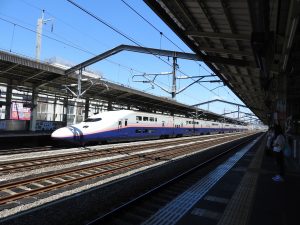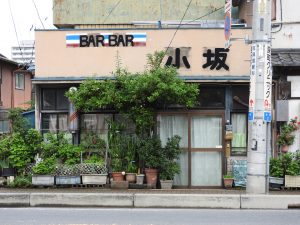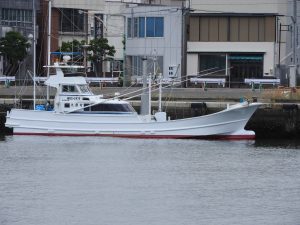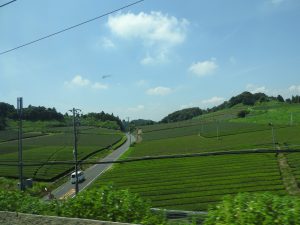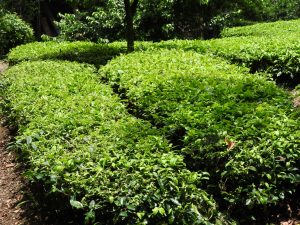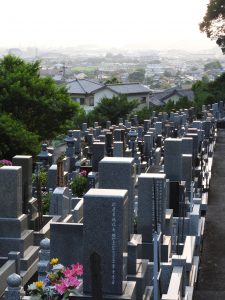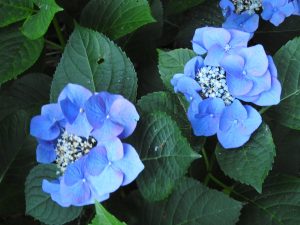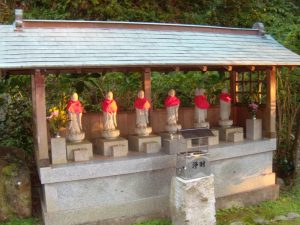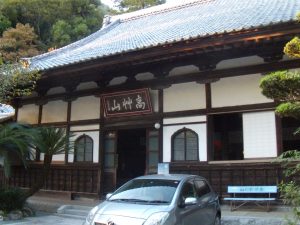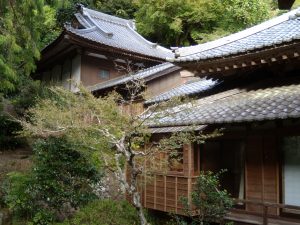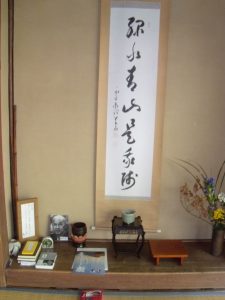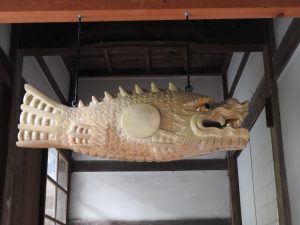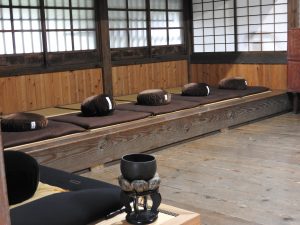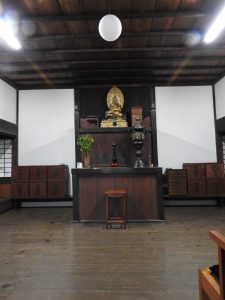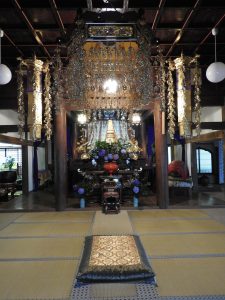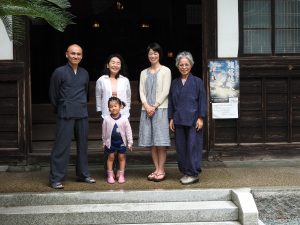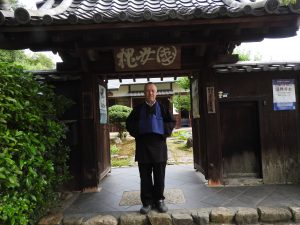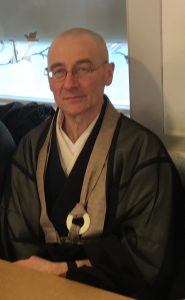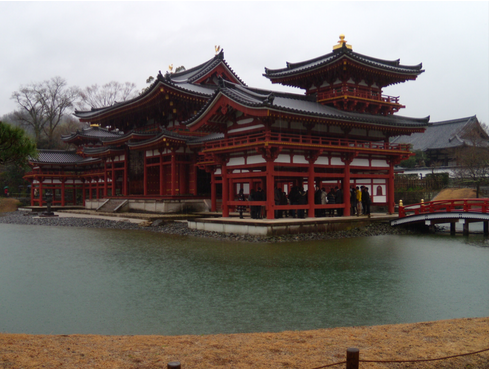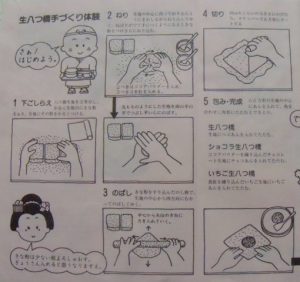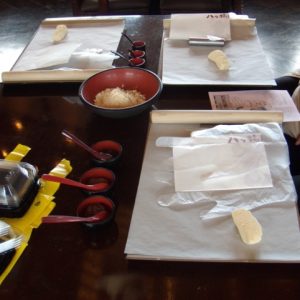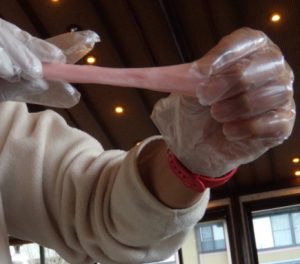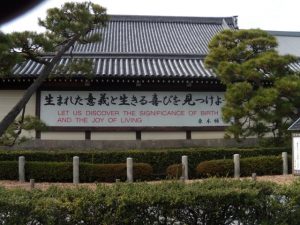The Mom and Pop Noodle Shop by Andrew Atkeison
It was a rainy winter night in Kyoto. I peeked into the foggy window of my favorite little neighborhood noodle shop to see if they were still open. Yes, it appeared so. The wind whipped around as I stowed my umbrella. I opened the squeaky door and stepped inside quickly so as not to allow in any extra rain. It was warm and cozy inside. “Kon banwa,” (good evening) I called out. The sound of a TV droned on in the background. There was no reply.
The shop was quiet, no customers; only the old guy who I assumed must be the owner was there. He was sitting at the counter, watching a game show on television. It was a comedy, and every now and then, he would laugh in time with the canned audience laughter on the TV. He made no sign that he heard my greeting when I walked in.
This little restaurant was my favorite place to have lunch, but I had never been there in the evening. During lunch hour, it was always bustling with business people and other customers. During the day, a mom and daughter waited tables. They had always been friendly, and I always ordered the same thing — chicken ramen. The mom and daughter must have already gone home for the evening.
After entering, I waited a moment politely so as not to interrupt. When the old guy looked up, I bowed and indicated that I would like to sit at a table in the corner. He nodded without speaking, signaling — sure go ahead. He went back to watching the game show. He never said a word, so I sat down at the corner table and started watching the TV too. I figured eventually, when it would be convenient, he would come over and take my order, but he never did. The game show was entertaining, but I was hungry. I was starting to wonder, what’s going on?
Finally, he got up from the counter, and I thought, now, finally, he is going to take my order. But he didn’t. Instead he went back into the kitchen without even looking my way.
I sat there waiting, thinking eventually he would come back and take my order. There was plenty of time to think, so my mind tried to figure it all out. Hmmm maybe he was closing up when I came in and didn’t want to be rude and said I could sit down, but now he is not going to serve me and he’s just waiting for me to leave. Maybe I should just take the hint and leave. I thought about walking out but decided that by Japanese standards, that would just be entirely too rude. I should simply stay and see what happens. I could wait him out. If I stayed there long enough, sooner or later something had to happen. This was getting interesting.
Meanwhile I could hear him putzing around in the kitchen. It was hard to tell if he was cooking something or if he was cleaning up getting ready to close, but I didn’t say anything. I just sat there watching the game show and waiting for him to come out and take my order.
As I sat there, my mind kept rolling on. Maybe he is one of those old-school guys I’ve heard about who remembers the war and hates Americans. He had a tough guy look about him like the sumo / samurai type. But then I thought, nah, the mom and daughter had always made me feel welcome, I’m just over-thinking it, I figured, be patient. In Japan, there are always many things going on beneath the surface that a foreigner could never imagine. If there is one thing to be learned it is how to wait patiently and respectfully.
Finally, the Dutch doors to the kitchen swung open, and I looked up thinking, now, finally, he is going to take my order. The old guy strode out of the kitchen, carrying a platter with a big steaming bowl of my usual order: chicken ramen. Wow, I was completely stunned. He knew what my order was all along. That moment of realization felt sweet. This must mean that I’m being accepted as a local. With that thought, a feeling came over me that was as warm as the cozy little shop on a winter’s night.
Outside in the darkness, the wind gusts whipped at the umbrella rack, and the rain pattered softly against the windows. Inside, I sat there warm and snug at the corner table, savoring my noodles. The old guy and I silently watched the late-night TV game show together. It wasn’t necessary to understand the language to appreciate the humor. Now, though, the feeling was different. Estrangement had given way to a sense of camaraderie and belonging. Occasionally, the old guy and I would both laugh together when something funny happened on the show.
Finally, when the show ended, I got up and paid the bill in exact change. He accepted the money without ever looking up and nodded that the amount was correct. We both bowed courteously. I wanted to thank him. My gratitude was for so much more than the noodles. I kept saying, “arigato” (thank you) “arigato.” A moment of comfortable silence passed between us. He had heard what I said. As I turned and left the shop, he bowed again silently in parting.
That rainy winter night in Kyoto so much was exchanged with so few words.


